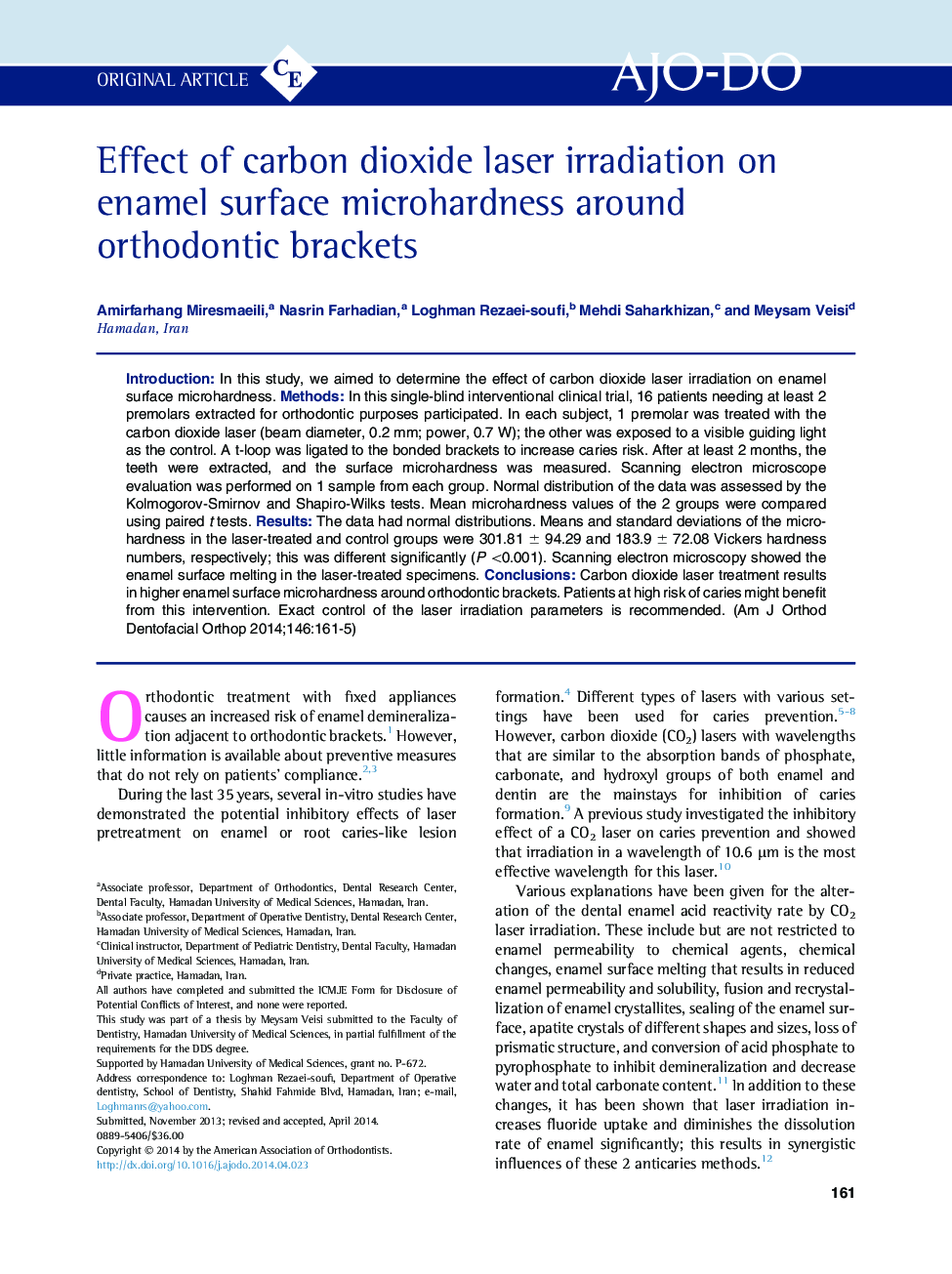| Article ID | Journal | Published Year | Pages | File Type |
|---|---|---|---|---|
| 3116411 | American Journal of Orthodontics and Dentofacial Orthopedics | 2014 | 5 Pages |
IntroductionIn this study, we aimed to determine the effect of carbon dioxide laser irradiation on enamel surface microhardness.MethodsIn this single-blind interventional clinical trial, 16 patients needing at least 2 premolars extracted for orthodontic purposes participated. In each subject, 1 premolar was treated with the carbon dioxide laser (beam diameter, 0.2 mm; power, 0.7 W); the other was exposed to a visible guiding light as the control. A t-loop was ligated to the bonded brackets to increase caries risk. After at least 2 months, the teeth were extracted, and the surface microhardness was measured. Scanning electron microscope evaluation was performed on 1 sample from each group. Normal distribution of the data was assessed by the Kolmogorov-Smirnov and Shapiro-Wilks tests. Mean microhardness values of the 2 groups were compared using paired t tests.ResultsThe data had normal distributions. Means and standard deviations of the microhardness in the laser-treated and control groups were 301.81 ± 94.29 and 183.9 ± 72.08 Vickers hardness numbers, respectively; this was different significantly (P <0.001). Scanning electron microscopy showed the enamel surface melting in the laser-treated specimens.ConclusionsCarbon dioxide laser treatment results in higher enamel surface microhardness around orthodontic brackets. Patients at high risk of caries might benefit from this intervention. Exact control of the laser irradiation parameters is recommended.
